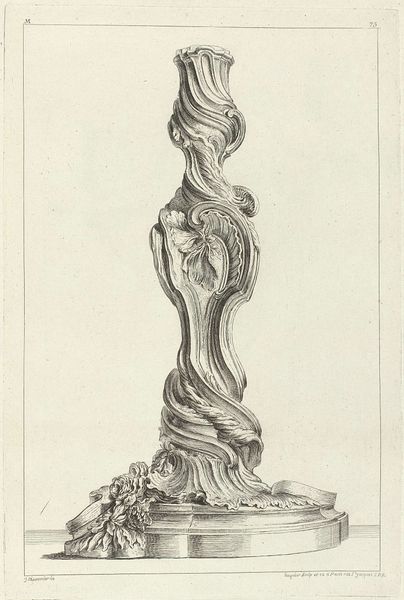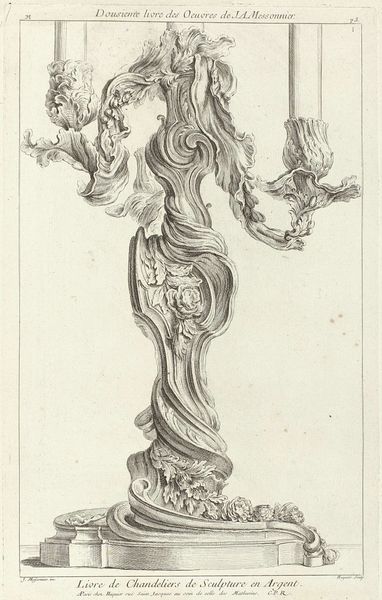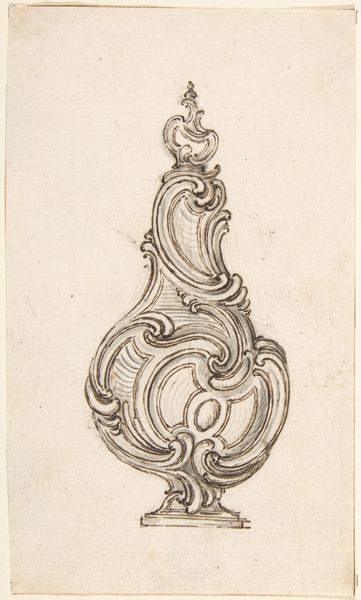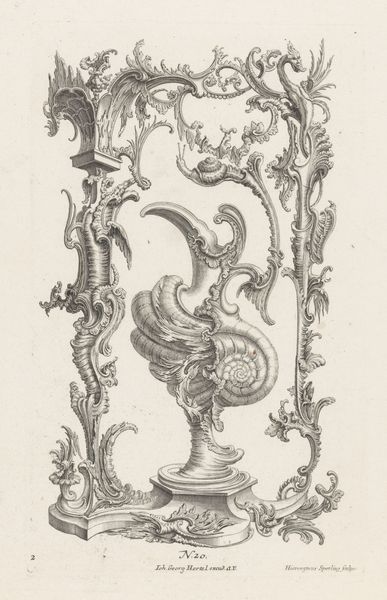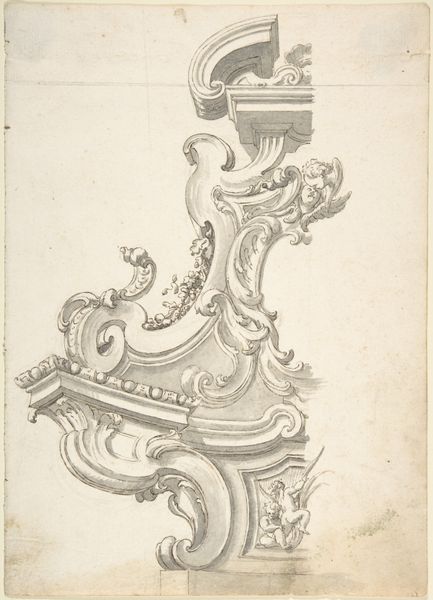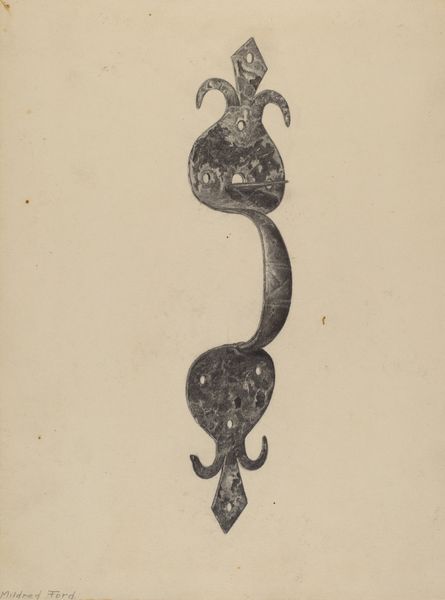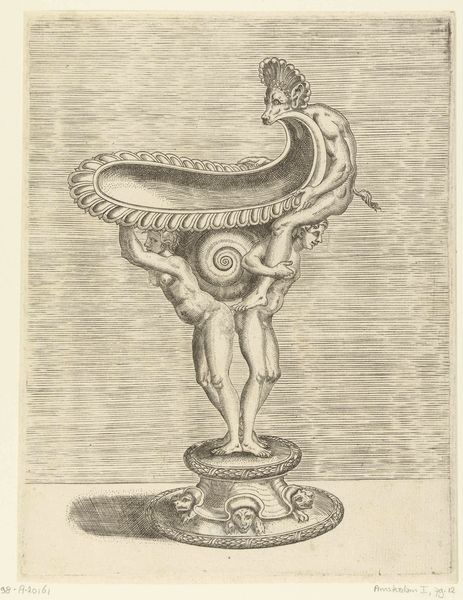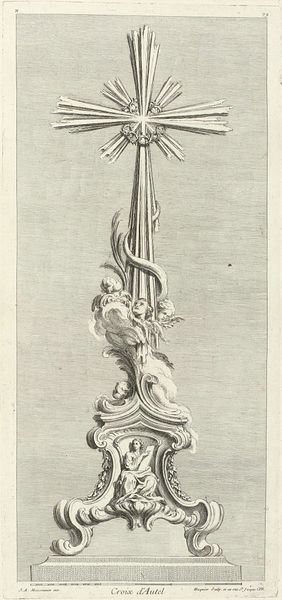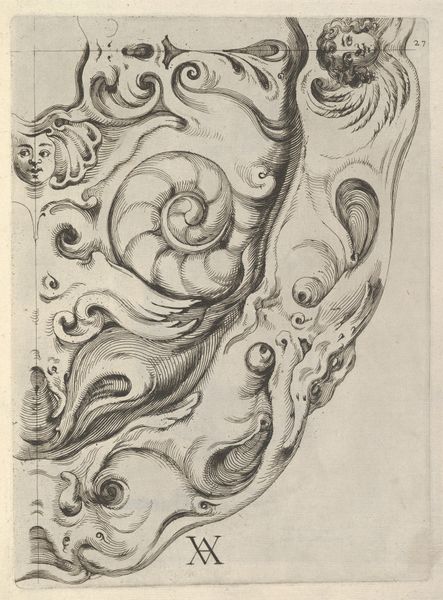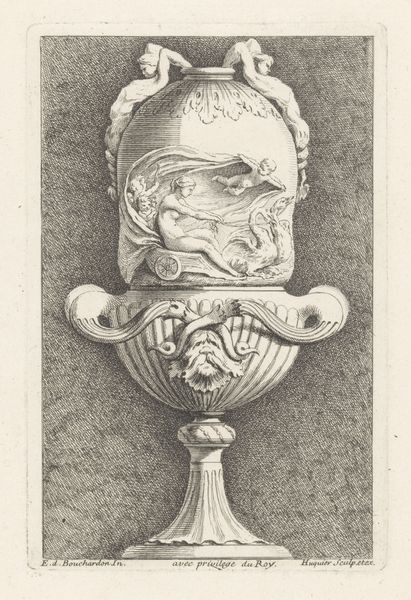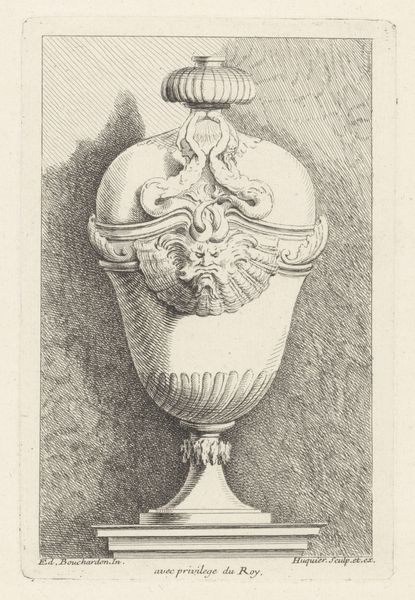
drawing, pencil
#
pencil drawn
#
drawing
#
baroque
#
pencil sketch
#
form
#
pencil drawing
#
geometric
#
pencil
#
pencil work
#
decorative-art
Dimensions: height 352 mm, width 235 mm
Copyright: Rijks Museum: Open Domain
Curator: Here we have a drawing titled "Ontwerp voor de voet van een kandelaar," or "Design for the Foot of a Candlestick," created by Gabriel Huquier sometime between 1738 and 1749. It’s currently held at the Rijksmuseum. Editor: My first thought is how wonderfully impractical it seems! All swirling curves and flourishes. I can already picture the artisans painstakingly shaping metal, likely silver or bronze, into such a complex form. Curator: Indeed. The Baroque style here is quite pronounced. We should consider this drawing not just as a design, but as a document of 18th-century artisanship and consumption. Huquier likely circulated such designs among workshops. How might its ornamental qualities signal status? Editor: That's a compelling point. Think about the social implications of commissioning such elaborate pieces! The labor required, the specialized skills—it screams luxury. But even in a design, the paper quality, the level of detail in the pencil work... these reflect material value, and, subsequently, social currency. Curator: Right. These drawings acted as visual languages for artisans and their patrons. By examining these designs, we see that decorative arts played an active role in affirming power, echoing into architecture and dress of the elites. What impact would that have in wider society? Editor: Possibly even a cultural affirmation. And there's also the function itself: the candlestick. Candles weren’t cheap. Imagine this elaborate foot supporting something both practical and beautiful, casting light into spaces, reinforcing hierarchies, rituals... the power of the decorative object! Curator: So the image invites multiple readings— as an artifact of design and of aspiration, linked to a network of patronage, production, and material desire. That really contextualizes it beyond just a preliminary drawing. Editor: Exactly! Thinking about who owned such candlesticks, and the labor practices employed in making them, reveals layers of social, economic, and cultural information embedded within. I think that’s critical for today’s viewers to see when engaging with this design.
Comments
No comments
Be the first to comment and join the conversation on the ultimate creative platform.

